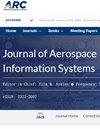Benchmarking Deep Learning Models on Myriad and Snapdragon Processors for Space Applications
IF 1.5
4区 工程技术
Q2 ENGINEERING, AEROSPACE
引用次数: 0
Abstract
Future space missions can benefit from processing imagery on board to detect science events, create insights, and respond autonomously. One of the challenges to this mission concept is that traditional space flight computing has limited capabilities because it is derived from much older computing to ensure reliable performance in the extreme environments of space: particularly radiation. Modern commercial-off-the-shelf processors, such as the Movidius Myriad X and the Qualcomm Snapdragon, provide significant improvements in small size, weight, and power packaging; and they offer direct hardware acceleration for deep neural networks, although these processors are not radiation hardened. We deploy neural network models on these processors hosted by Hewlett Packard Enterprise’s Spaceborne Computer-2 on board the International Space Station (ISS). We find that the Myriad and Snapdragon digital signal processors (DSP)/artificial intelligence processors (AIP) provide speed improvement over the Snapdragon CPU in all cases except single-pixel networks (typically greater than 10 times for DSP/AIP). In addition, the discrepancy introduced through quantization and porting of our Jet Propulsion Laboratory models was usually quite low (less than 5%). Models were run multiple times, and memory checkers were deployed to test for radiation effects. To date, we have found no difference in output between ground and ISS runs, and no memory checker errors.基于Myriad和Snapdragon处理器的空间应用深度学习模型的基准测试
未来的太空任务可以从机载图像处理中受益,以探测科学事件,创造见解,并自主响应。这一任务概念面临的挑战之一是,传统的空间飞行计算能力有限,因为它是从更老的计算中衍生出来的,以确保在极端空间环境下的可靠性能,特别是辐射。现代商用现成处理器,如Movidius Myriad X和高通骁龙,在小尺寸、重量和功耗封装方面都有显著改进;它们为深度神经网络提供直接的硬件加速,尽管这些处理器没有防辐射。我们在这些处理器上部署了神经网络模型,这些处理器由国际空间站(ISS)上的惠普企业(Hewlett Packard Enterprise)的星载计算机-2托管。我们发现Myriad和Snapdragon数字信号处理器(DSP)/人工智能处理器(AIP)在除单像素网络(DSP /AIP通常大于10倍)之外的所有情况下都比Snapdragon CPU速度提高。此外,通过量化和移植我们的喷气推进实验室模型引入的差异通常很低(小于5%)。模型被多次运行,内存检查器被部署来测试辐射的影响。到目前为止,我们没有发现地面和国际空间站运行之间的输出有任何差异,也没有内存检查器错误。
本文章由计算机程序翻译,如有差异,请以英文原文为准。
求助全文
约1分钟内获得全文
求助全文
来源期刊

Journal of Aerospace Information Systems
ENGINEERING, AEROSPACE-
CiteScore
3.70
自引率
13.30%
发文量
58
审稿时长
>12 weeks
期刊介绍:
This Journal is devoted to the dissemination of original archival research papers describing new theoretical developments, novel applications, and case studies regarding advances in aerospace computing, information, and networks and communication systems that address aerospace-specific issues. Issues related to signal processing, electromagnetics, antenna theory, and the basic networking hardware transmission technologies of a network are not within the scope of this journal. Topics include aerospace systems and software engineering; verification and validation of embedded systems; the field known as ‘big data,’ data analytics, machine learning, and knowledge management for aerospace systems; human-automation interaction and systems health management for aerospace systems. Applications of autonomous systems, systems engineering principles, and safety and mission assurance are of particular interest. The Journal also features Technical Notes that discuss particular technical innovations or applications in the topics described above. Papers are also sought that rigorously review the results of recent research developments. In addition to original research papers and reviews, the journal publishes articles that review books, conferences, social media, and new educational modes applicable to the scope of the Journal.
 求助内容:
求助内容: 应助结果提醒方式:
应助结果提醒方式:


